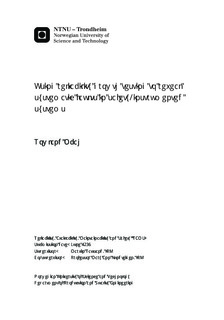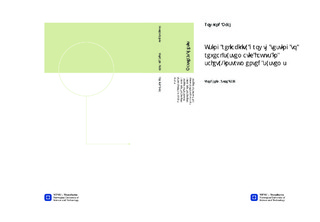| dc.description.abstract | This master thesis studies the effects of systematic faults in the development phase of a safety-instrumented system, especially the relation between systematic faults and operational common-cause failures. Safety-instrumented systems are used widely in many industry sectors to detect on the onset of hazardous events and mitigate the consequences to humans, the environment and material assets. Systematic faults are non-physical faults introduced due to design errors or mistakes. Unidentified systematic faults represent a serious problem, as their safety effects are unpredictable and are not normally susceptible to a statistical analysis like random faults. In addition to safety effects, there can also be economic losses through product recalls, high warranty costs, customer dissatisfaction and loss of market share. Reliability growth testing is the same as TAAF (test-analyze-and-fix) testing of a product early in the design and development phases of the product life cycle when design changes can be made readily in response to observed failures. Reliability growth testing, if applied in the development phase of a safety-instrumented system helps to overcome the disadvantages of doing the test in other phases, because it can be costly, highly inconvenient and time consuming in these phases. The main focus of the thesis is to study, evaluate, and discuss to what extent reliability growth testing of safety-instrumented systems is a suitable approach for identifying and avoiding systematic faults, and develop guidelines for reliability growth testing to achieve this purpose. The thesis builds on concepts, methods and definitions adopted from two major standards for safety-instrumented applications: IEC 61508 and IEC 61511, and IEC 61014: Programmes for reliability growth. The development of procedures on how to identify and correct systematic faults by reliability growth testing are inspired by these three standards and other relevant literature found during the course of the master thesis project. The main contributions of this thesis are:1. Illustrative examples of fire and gas detection and mitigation systems, car airbag and mobile phone have been used to develop procedures on how reliability growth testing is used to identify and correct systematic faults.2. Detailed discussion of systematic faults, common-cause failures and the relationship between them have been presented. It has been established that systematic faults give rise to common-cause failures, which dominate the reliability of safety-instrumented systems.3. Detailed discussion of reliability growth testing, its models and methods, and strengths and weaknesses of the models and methods have been provided. Both continuous and discrete models are studied. The Duane model, which is an example of a continuous model is commonly used because of its simplicity and graphical presentation.4. The challenges and pitfalls of reliability growth testing in relation to systematic faults are discussed. The major challenge is the introduction of new failure modes, especially in case of software testing.5. Measures to handle systematic faults revealed during the test have been provided. The measures include: use of diverse and redundant channels, design reviews, use of simple designs, use of competent designers, training and re-training of designers and use of reliability analysis to identify causes of faults. | nb_NO |

